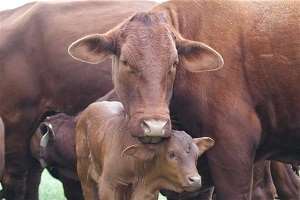In a recent conversation with Jim Robb of the Livestock Marketing Information Center, told Radio Oklahoma Ag Network’s Farm Director Ron Hays that 2016 was year of some growth in the US cow herd. He says we can expect to confirm this with the US Department of Agriculture’s upcoming cattle inventory report.

“The mechanisms were already set in motion,” Robb said. “The heifer hold-back is really what we’re building on now.”
Although, he does say that during the second half of 2016, we did begin seeing some increase in heifer and cow slaughter. However, it was not enough to actually stabilize the industry. He suggests that as of the start of this year, we will have 2.5 to 3 percent more cattle that we did a year ago. Last year, it was up as high as 3.5 percent but he says as we venture further into 2017, transitions will already be in place.
“Cow slaughter is up, heifer slaughter is starting to increase rather dramatically - so we just have to work through that process in 2017,” Robb said. “So, come January 1, 2018, we ought to see some real rather stable beef cow herd numbers starting to emerge.”
Click here to see more...